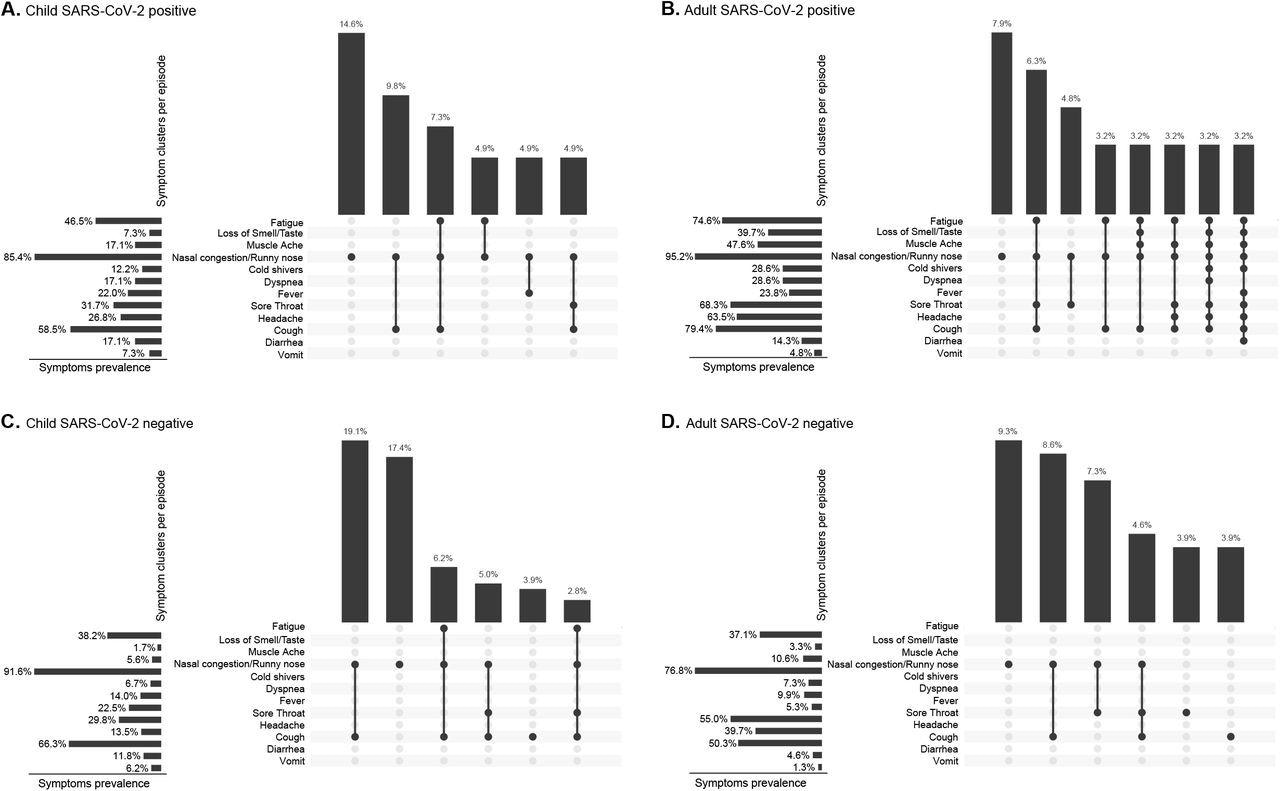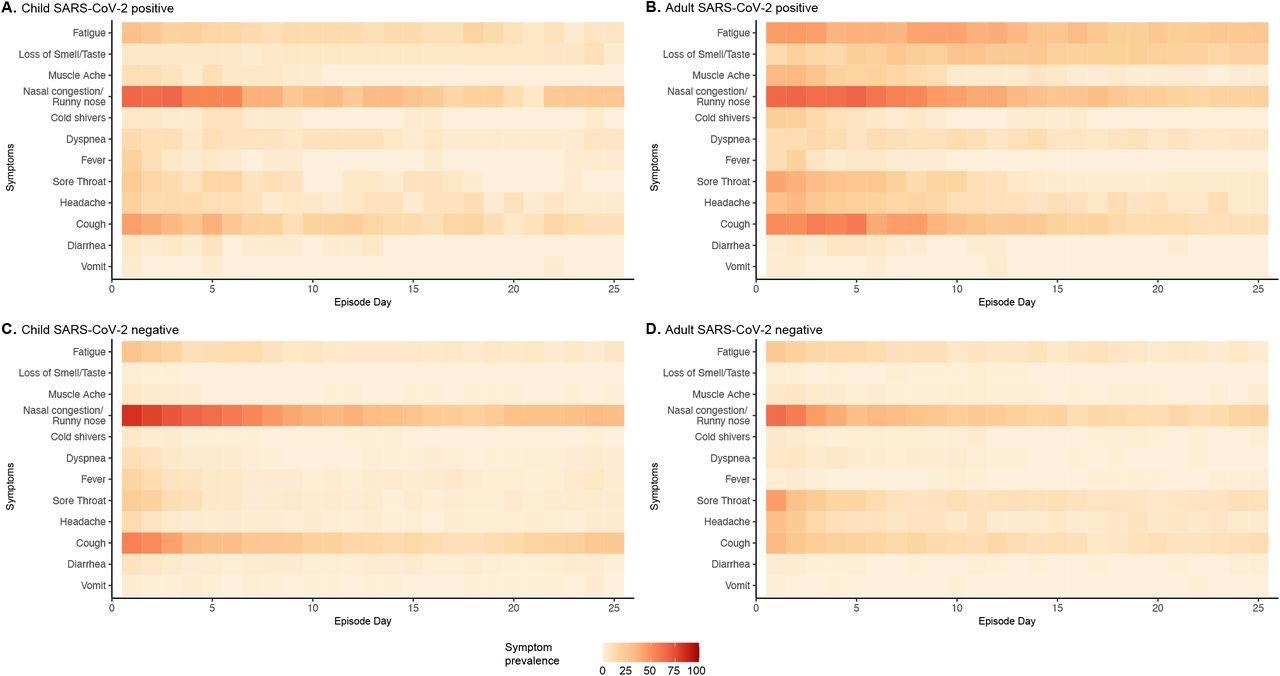The severe acute respiratory distress syndrome coronavirus (SARS-CoV-2) has claimed over 5.3 million lives worldwide as of December 17, 2021, and continues to be a global threat.
It is estimated that around 20-50% of cases of SARS-CoV-2 infections in children under the age of 18 are asymptomatic. However, several researchers believe that the true incidence of SARS-CoV-2 infections in children may be underestimated. This is further complicated by the lack of systematic quantification or references available for comparing the symptomatology and incidence of SARS-CoV-2 infections to acute respiratory illness (ARI) due to other infections in children.

Study: Incidence rates and symptomatology of community infections with SARS-CoV-2 in children and parents: The CoKids longitudinal household study. Image Credit: Dragana Gordic / Shutterstock.com

 *Important notice: medRxiv publishes preliminary scientific reports that are not peer-reviewed and, therefore, should not be regarded as conclusive, guide clinical practice/health-related behavior, or treated as established information.
*Important notice: medRxiv publishes preliminary scientific reports that are not peer-reviewed and, therefore, should not be regarded as conclusive, guide clinical practice/health-related behavior, or treated as established information.
In a recent medRxiv* preprint study, researchers conducted intensive and longitudinal monitoring of households with children of different ages. Herein, the researchers aimed to estimate the community incidence of symptomatic and asymptomatic SARS-CoV-2 infections in children. In addition, they also assessed the symptomatology of SARS-CoV-2 positive relative to SARS-CoV-2 negative ARI.
About the study
The current prospective study included households with at least one child under the age of 18 years and was obtained from three existing Dutch cohorts. These included the RESCEU cohort, which consists of children between the ages of 0-3 years, the MUIS-cohort consisting of children between the ages of 6-8 years, and the Generation R, which consists of children between the ages of 14-17 years.
Eligibility for the study included SARS-CoV-2 screening at intervals of 4-6 weeks for all household members during the 23 week follow-up period. New-onset respiratory symptoms were actively reported until July 1, 2021.
The follow-up was temporarily intensified following any new-onset respiratory symptoms in a household member or a SARS-CoV-2 positive test result. This follow-up process also included daily symptom recording, repeated polymerase-chain-reaction (PCR) testing of nose-throat, saliva, and fecal samples, and SARS-CoV-2 antibody measurement of paired dried blood spots)in all household members.
Statistical analyses were used to calculate age-stratified incidence rates for SARS-CoV-2 positive and negative episodes. Symptomatology and disease burden of respiratory episodes were also compared by SARS-CoV-2 status and age.
Study findings
The final analysis included 307 households enrolled with a total study population of 1,209 subjects. The researchers detected 64 SARS-CoV-2 positive cases and 118 SARS-CoV-2 negative respiratory outbreaks.
The highest incidence rate for SARS-CoV-2 negative cases was found in children under the age of 12 years of age. The SARS-CoV-2 positive incidence in this age group was 0.21/person-year (PY) for only confirmed cases and 0.41/PY after including all positive cases.
The incidence of SARS-CoV-2 did not differ by age group. However, nasal congestion/runny nose, with or without cough and fatigue, were the three most prevalent symptom clusters for all kinds of respiratory episodes, including those who were SARS-CoV-2 positive or negative.
There was no difference observed in the symptomatology and severity of SARS-CoV-2 positive versus negative respiratory episodes among children. However, in adults, SARS-CoV-2 positive episodes had a significantly higher number and severity of symptoms and a longer duration.
The researchers detected a high incidence rate of SARS-CoV-2 infections in children that were similar to adults. The findings also highlighted that after almost two years of the COVID-19 pandemic, over 60% of Dutch children under the age of 12 had been infected with SARS-CoV-2.
 Most common symptom clusters per episode of SARS-CoV-2 positive and negative respiratory episodes in children (<18 years of age) and adults. Footnote: Figure A (n=41), B (n=63), C (n=178) and D (n=151).
Most common symptom clusters per episode of SARS-CoV-2 positive and negative respiratory episodes in children (<18 years of age) and adults. Footnote: Figure A (n=41), B (n=63), C (n=178) and D (n=151).
Implications
The current study suggests that symptomatology and disease severity of SARS-CoV-2 in children was similar to respiratory illnesses from other causes. In adults, SARS-COV-2 positive episodes are characterized by a greater number of and prolonged symptoms and higher severity.
 Heat map of individual symptoms up to day 25 of SARS-CoV-2 positive and negative respiratory episodes in children (<18 years of age) and adults.
Heat map of individual symptoms up to day 25 of SARS-CoV-2 positive and negative respiratory episodes in children (<18 years of age) and adults.
These findings may assist public health decisions on coronavirus disease 2019 (COVID-19) vaccination policies for children, making public health authorities more proactive in providing vaccination to children on priority.

 *Important notice: medRxiv publishes preliminary scientific reports that are not peer-reviewed and, therefore, should not be regarded as conclusive, guide clinical practice/health-related behavior, or treated as established information.
*Important notice: medRxiv publishes preliminary scientific reports that are not peer-reviewed and, therefore, should not be regarded as conclusive, guide clinical practice/health-related behavior, or treated as established information.